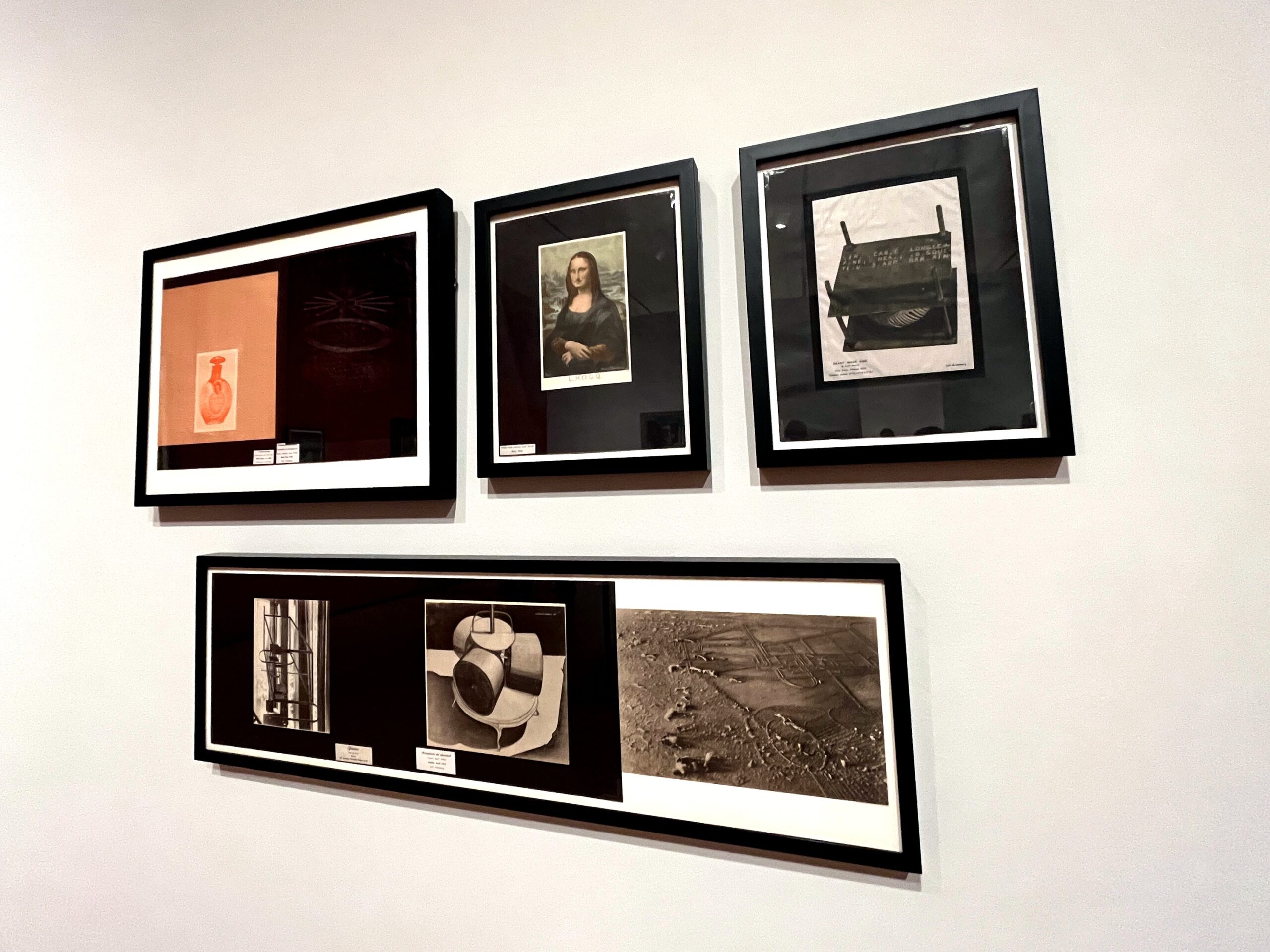
Marcel Duchamp at the Kemper
When fantasizing about courage, some of you gallop into battle astride a horse; some dive into churning waters to rescue a drowning child; some disable a crazed man who’s firing an AR-15 into a crowd.
I join the French Resistance.
After soaking up every episode of Transatlantic and envisioning my job with the Emergency Rescue Committee (ERC) in Vichy France, I hunted down the book that inspired the series. A day later, by pure coincidence, I attended a gallery talk by Tobias Feldmann, a Ph.D. student here at Washington University.
Held at the Kemper Museum, the talk was titled “Exile Art.” And the first painting I noticed was by Max Ernst, who escaped from the Gestapo with the Emergency Rescue Committee’s help. Waving a hand toward other brilliant paintings by exiled refugees, Feldmann said, “None of the works on display here were acceptable to the Nazis. They were branded as degenerate.”
After researching the artists, he filled three giant display cases with documents and artifacts. Letters to and fro in the ERC’s desperate effort to find more visas. Tarot cards I had watched the Surrealists dream up in Transatlantic. A portable leather chess set, easy for a refugee to carry, designed by Marcel Duchamp. (This was more than a whim; Duchamp was so obsessed with chess that his bride glued all the pieces to the board while he slept.)
Duchamp, Ernst, and several other artists, along with the surrealist writer André Breton, began working together years before Hitler seized power. After the Nazis occupied Paris, this tiny, ridiculously talented clique took refuge in Marseilles. There, the ERC would end up saving perhaps as many as 4,000 people by helping them reach the United States. Through the tense waiting, with daily announcements about encroaching German troops, Duchamp kept his sense of humor. His moustached and goateed Mona Lisa, a readymade Dada postcard, also hangs in that Kemper gallery. He called it LHOOQ, the letters sounding out as the French phrase “Elle a chaud au cul.” The words can be translated as “There is fire down below” or, less elegantly, “She has a hot ass.”
Rebellious eccentrics, these artists were brave in their art and, once they had to be, brave in reality. Had they been able to stay, safe and adored, in Paris, they would have remained remote to us, wrapped in mystique. In exile, they were vulnerable. We learn how they amused themselves under duress, what gave them courage, what annoyed them or made them annoying, who they loved, and why. Ernst wound up married to Peggy Guggenheim, whose money had helped rescue so many artists and save their work. Mary Jayne Gold, another American heiress who threw herself into rescue work, fell in love with a Jewish refugee. He chose to stay and help others rather than flee to safety with her.
Thrilling as the rescues and love stories are, they cannot compete with the tragedies. This was a select and privileged group, Feldmann points out; thousands of people died with no hope of rescue. Walter Benjamin agreed to join a ragtag group, guided along a mountain pass across the Pyrenees into Spain. Halfway there, he swallowed morphine tablets because he had no transit visa and could not face being sent back to Nazi Germany. Ernst’s first wife, Luise Straus-Ernst, managed to get a visa to travel to the United States—but “it was personally rescinded by Eleanor Roosevelt,” Feldmann says. Straus-Ernst died at Auschwitz.
The artists who made it here were greeted with awed respect—or xenophobic revulsion. Art Digest praised their sophistication, but others resented their arrival. Feldmann chose not to include the ugliest, most hostile responses, but it is easy to see why many of the artists returned to Europe as soon as they could. Still, their presence had already made New York the center of the art world, nudging Paris aside.
After the talk, as we milled about peering into the cases, I overheard someone ask, “You speak Slovenian?” Yeah, the man replied, and they discussed his work as a curator for the Frankfurt Book Fair—the most important book fair in the world for publishers’ international dealmaking. This is a university, I thought to myself, chock full of artists and intellectuals whose work has global reach. What if they were in danger? What if our country were occupied or, perhaps more likely, placed under a regime that was hostile to artists and intellectuals? Would there be a little committee in another country, steered by a journalist, smuggling them across a remote pathway to Canada or around that damned wall to Mexico? Where would they wait for their visas—instead of an old villa on the Riviera, a Gilded Age mansion in the Central West End? Would a feisty Canadian heiress risk her life to help them? And when they reached their new home, would they be vilified?
“The topic of being a refugee is now more relevant than ever,” Feldmann said quietly. At his talk’s end, he underscored the point: “There have never been more refugees at any one time in history.” A big statement, one I had to fact-check. “More people have been forced to flee their homes than ever before,” I found, “with a staggering 110 million individuals displaced worldwide.”
The source? The International Rescue Committee, the new name of the ERC.
Its work continues.
Read more by Jeannette Cooperman here.
